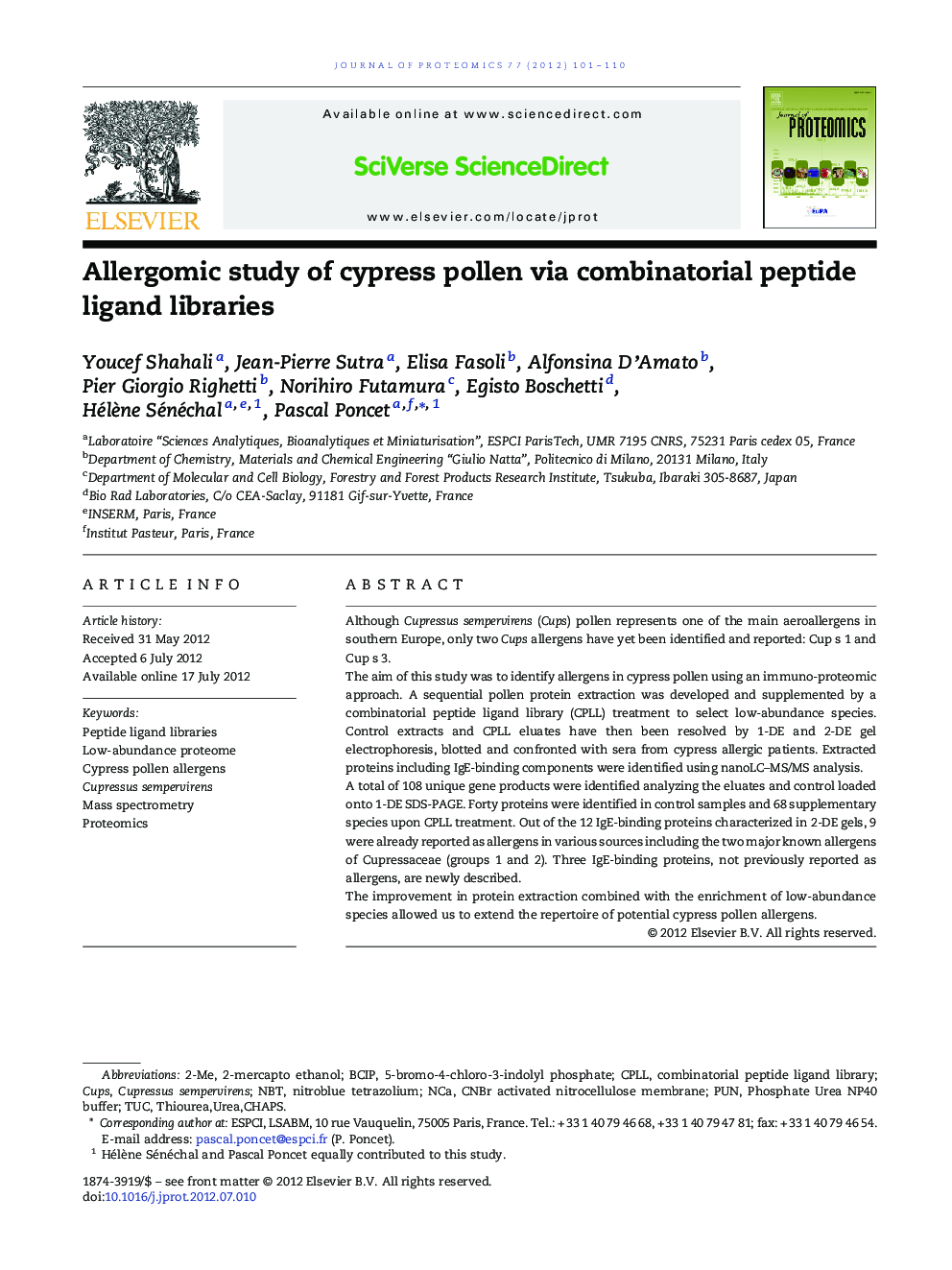| Article ID | Journal | Published Year | Pages | File Type |
|---|---|---|---|---|
| 1226587 | Journal of Proteomics | 2012 | 10 Pages |
Although Cupressus sempervirens (Cups) pollen represents one of the main aeroallergens in southern Europe, only two Cups allergens have yet been identified and reported: Cup s 1 and Cup s 3.The aim of this study was to identify allergens in cypress pollen using an immuno-proteomic approach. A sequential pollen protein extraction was developed and supplemented by a combinatorial peptide ligand library (CPLL) treatment to select low-abundance species. Control extracts and CPLL eluates have then been resolved by 1-DE and 2-DE gel electrophoresis, blotted and confronted with sera from cypress allergic patients. Extracted proteins including IgE-binding components were identified using nanoLC–MS/MS analysis.A total of 108 unique gene products were identified analyzing the eluates and control loaded onto 1-DE SDS-PAGE. Forty proteins were identified in control samples and 68 supplementary species upon CPLL treatment. Out of the 12 IgE-binding proteins characterized in 2-DE gels, 9 were already reported as allergens in various sources including the two major known allergens of Cupressaceae (groups 1 and 2). Three IgE-binding proteins, not previously reported as allergens, are newly described.The improvement in protein extraction combined with the enrichment of low-abundance species allowed us to extend the repertoire of potential cypress pollen allergens.
Graphical abstractYou don't have to go all the way to Pt. Lobos in Monterey (California) to start sneezing while inhaling this male pollen of Cupressus macrocarpa. Suffice to tour around the Mediterranean coast or even to read about the new allergens here described!Figure optionsDownload full-size imageDownload high-quality image (166 K)Download as PowerPoint slideHighlights► The most extensive description of cypress pollen proteome: 133 species identified. ► Twelve IgE-binding proteins of which 9 are already reported as allergens (2 in Cupressus). ► Three IgE-binding proteins, as novel allergens, are here described for the first time. ► Their IDs: Rab-like protein, chaperone HSP104, and sigma factor sigb regulation protein. ► Enrichment in low abundance proteins reveals diversified allergen and IgE repertoires.
